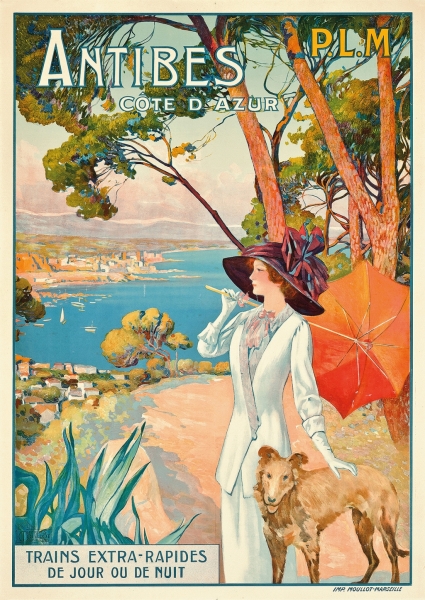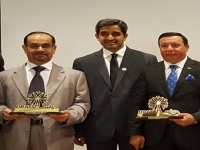Sports
Drassa Sport Science Award Ceremony in the honour of professor Wisam Al Shaikhli
Drassa Sport Science Award Ceremony

Drassa Award Winners (Source: Ahmad Sharifi mediates Winners)
USPA NEWS -
Translated by Wafaa Benjelloun
The 2015 ““ 2016 Second Session Winners. Sports Drassa Award Ceremony .Sponsored by the National Observatory of Sport in Tunisia, the 2015-2016 Award ceremony for the winners in the second session of the "Innovation in the sports sector"
The 2015 ““ 2016 Second Session Winners. Sports Drassa Award Ceremony .Sponsored by the National Observatory of Sport in Tunisia, the 2015-2016 Award ceremony for the winners in the second session of the "Innovation in the sports sector"
Was assigned to academics of sport within the context of the Second International Scientific Conference on Sport Sciences. It was held on Friday April 29 2016.
A group of specialists from various Arab countries, members of the award board of Directors and the scientific Committee Advisory board prize were present. The preamble of the ceremony started with Conference Chairman Prof. Dr. Nizar Souissi congratulating members of the award on this initiative, which serves academics in the sector of sports professionals.
A group of specialists from various Arab countries, members of the award board of Directors and the scientific Committee Advisory board prize were present. The preamble of the ceremony started with Conference Chairman Prof. Dr. Nizar Souissi congratulating members of the award on this initiative, which serves academics in the sector of sports professionals.
The chairman then followed his speech by thanking the attendance and explaining that the purpose of the award was to find a model for achieving the goal, honor the professionals in the fields of sports science and appraising their talents.
It is moreover a growth award inspired by the promotion of awareness, culture and values of sport, which depends mainly on the abilities, excellence, professionalism withstanding innovation and development.
It is moreover a growth award inspired by the promotion of awareness, culture and values of sport, which depends mainly on the abilities, excellence, professionalism withstanding innovation and development.
He expressed his appreciation to all academic institutions and individuals, professionals working within the educational and sports sector who have joined the award participating with interest and concern.
Gratitude was also expressed to members of the Award Council Advisory Board, the Scientific Committee and all the unknown soldiers who were unable to attend and participate in the closing ceremony as well as the Award General work team Secretariat.
He stressed his commitment to development and continuity with the will of God, and took the opportunity to announce the issue of a solid international scientific journal to assist professional colleagues.
Gratitude was also expressed to members of the Award Council Advisory Board, the Scientific Committee and all the unknown soldiers who were unable to attend and participate in the closing ceremony as well as the Award General work team Secretariat.
He stressed his commitment to development and continuity with the will of God, and took the opportunity to announce the issue of a solid international scientific journal to assist professional colleagues.
The awards were then presented to the winners by Prof. Dr. Kemal Dervish to Dr. Mohammad Nader of the Arab Republic of Egypt, for the best applied sport science research (Advanced Material Engineering and Nanotechnology for Improving Sports Performance and Equipment.
Dr. Aqeel al-Araji presented Dr. Ali al-Zamili of the Republic of Iraq with his award in the category of best applied athlete scientific research (Design and Allocation device for measuring the flexibility of the rear spine.
As for the best intellectual production, the award was presented by Professor Dr. Nader Chalabi Karam to Dr. Ihab Imad Eddin of the Arab Republic of Egypt for his sports book (Modern laboratory dimensions.
Dr. Aqeel al-Araji presented Dr. Ali al-Zamili of the Republic of Iraq with his award in the category of best applied athlete scientific research (Design and Allocation device for measuring the flexibility of the rear spine.
As for the best intellectual production, the award was presented by Professor Dr. Nader Chalabi Karam to Dr. Ihab Imad Eddin of the Arab Republic of Egypt for his sports book (Modern laboratory dimensions.
Dr. Maryam Mirza presented Dr. Muhanad Kamel Shaker of the Republic of Iraq in the category of intellectual innovation (indicating swimmer´s arms and legs strength components.
Prof. Dr. Nizarr Souissi presented the award to Prof. Wessam AlShaykhli from the Republic of Iraq for Best Sports lecturer.
As for the best Initiative Foundation for a professional institution, Prof. Magda Chadli of Dubai Police Forces, United Arab Emirates represented by Colonel Dr / Khalil Jassem Meza was presented the award for (International Conference of Sports against crime.
Prof. Dr. Nizarr Souissi presented the award to Prof. Wessam AlShaykhli from the Republic of Iraq for Best Sports lecturer.
As for the best Initiative Foundation for a professional institution, Prof. Magda Chadli of Dubai Police Forces, United Arab Emirates represented by Colonel Dr / Khalil Jassem Meza was presented the award for (International Conference of Sports against crime.
Dr. Mohi Kaaki presented the award to the Department of Physical Education, University of Sultan Qaboos of Oman, represented by Dr. / Majid Albossavi for (professional initiative to promote sport projects "endorsing athletics in the Sultanate of Oman through the development of children athletic competitions.
At the end of the ceremony, the award president presented an award to the President of the Conference, members of the Scientific Committee Advisory Board and the Award Council. Photographs were taken with all the winners.
At the end of the ceremony, the award president presented an award to the President of the Conference, members of the Scientific Committee Advisory Board and the Award Council. Photographs were taken with all the winners.
Liability for this article lies with the author, who also holds the copyright. Editorial content from USPA may be quoted on other websites as long as the quote comprises no more than 5% of the entire text, is marked as such and the source is named (via hyperlink).






